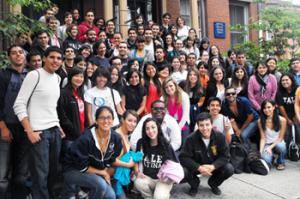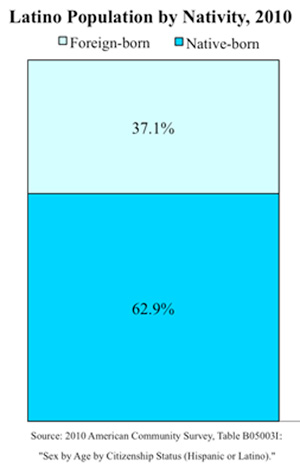
Latino immigrants hold fewer jobs than Latinos born in the United States for the first time in more than two decades. This change is happening because it is now harder for immigrants to enter and find jobs in the U.S., and because a new generation of U.S.-born Hispanics is entering the U.S. workforce, according to a new report from the Pew Research Center.
This information comes as politicians are focusing more and more on immigration and job recovery as the midterm elections for Congress and state offices are coming this fall. As the nation's largest ethnic or racial minority, Hispanic voters are an important voting bloc for both parties, making up 17 percent of the nation's population and 15 percent of the labor force in 2011, according to the U.S. Census Bureau and the Labor Department.
The number of foreign-born Hispanics holding jobs in the United States - legal and illegal - dipped below 50 percent of Hispanics with jobs last year for the first time since 1995, coming in at 49.7 percent of the more than 22 million employed Latinos in the fourth quarter of the year.

Back in 1995 - one year after the then-Immigration and Naturalization Service first estimated the unauthorized immigrant population in the United States - foreign-born Hispanics held 50.5 percent of the jobs held by Hispanics in the United States. It peaked at 56.1 percent in 2007 before rapidly dropping down to the current figures as the country fell into recession, according to Rakesh Kochhar, associate director of research for the center's Hispanic Trends Project.
"Because the U.S.-born Hispanic population is growing rapidly, and accounting for most of the growth in the Hispanic population, it is likely that the U.S.-born will continue to be the majority of Latino workers unless the economic recovery triggers a new, rising tide of immigration," the report said.
Kochhar said a sneak peek at the employment numbers showed the share of foreign-born Hispanic workers holding jobs among all Hispanics with jobs dropping again in the first quarter of 2014.
"In fact, the employment of immigrant Latinos has been at a standstill for at least two years now," he said.
The unemployment rates for both immigrant and U.S.-born Hispanics is higher than it was back in the fourth of the quarter of 2007, when it was 6.8 percent for U.S.-born Latinos and 5.2 percent for immigrant Latinos. Overall, the unemployment rate was 4.6 in during that same time in 2007.
In the fourth quarter of 2013, it was 10.3 percent for U.S. Hispanics and 7.2 percent for immigrant Hispanics. And 6.7 overall.
The recession hit other racial groups hard as well. In the fourth quarter of 2007, the unemployment rate was 3.7 percent for whites and the same for Asians, and 8.6 percent for blacks. In the fourth quarter of 2013, it was 5.2 percent for whites and the same for Asians, and 12.1 percent for blacks.
Follow Jesse J. Holland on Twitter.
Copyright 2014 The Associated Press.
